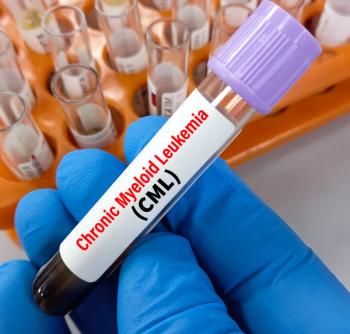
- Volume 0 0
Painful Diabetic Neuropathy: Alternative Treatments
This is the second article in a 2-part series discussing currently available treatments for painful diabetic neuropathy (PDN). Neuropathic pain presents in 30% of all diabetes patients, and even in up to another 20% of diabetes patients with good glycemic control. Intensive glycemic control is still the first-line approach for the prevention and treatment of all diabetic neuropathies.
The first article in this series (Pharmacy Times, April 2006) focused on pharmacologic therapies available to treat the symptoms of PDN. This article will focus on nonpharmacologic approaches to treat the symptoms of PDN as well as some disease-modifying treatments that actually may improve nerve function in these patients.
Nonpharmacologic Agents for Symptom Relief
Acupuncture
Acupuncture is an alternative therapy that originated >3000 years ago in China. It involves the placement of small, fine, nonmedicated needles at various points on the body. Acupuncture commonly is used for pain reduction in many types of diseases or conditions. The results of small studies of PDN patients receiving acupuncture therapy show pain improvement or resolution in the majority of patients. Other beneficial outcomes include overall quality-of-life improvements, such as improved sleep and mobility.
Polyurethane Film
Polyurethane film dressings have been used with some success and minimal adverse effects. A thin layer of film is applied to the affected areas of the lower extremities to provide a barrier from painful external stimuli. Patients reported significant pain reductions in the affected extremities that were treated with the film, versus those without the film. The use of pain medication was reduced, and other quality-of-life improvements were seen.
Electrical Stimulation
Electrical stimulation encompasses a variety of techniques, including transcutaneous electrical nerve stimulation (TENS) and percutaneous electrical nerve stimulation (PENS). Electrical stimulation involves the use of electrodes, through either a noninvasive or a minimally invasive procedure, to provide a series of electric shocks to an area of the body. Both TENS and PENS have shown significant reduction in pain for patients but require ongoing treatment. In the majority of patients, pain returned within 1 week of treatment cessation.
The mechanism for analgesia is not well-understood but is thought to be related to stimulation of endogenous opioid-related substances. In the studies that have been conducted, it is virtually impossible to compare the active treatment with placebo, for obvious reasons. Most patients also reported other quality-of-life improvements.
Other nonpharmacologic approaches can include massage therapy, stretching and relaxation exercises, and short coldwater foot soaks.
Disease-modifying Therapies
Alpha Lipoic Acid
Alpha lipoic acid is an alternative therapy given by infusion that has shown marked reduction in pain associated with PDN. Its mechanism of action is thought to be related to its antioxidant properties. A double-blind study including 328 patients was conducted, using various doses of alpha lipoic acid versus placebo. The 600-mg dose of the medication produced clinically significant relief of pain, burning, and paresthesias, compared with lower doses of the medication or placebo. Although the drug was well-tolerated, one drawback is the requirement of daily outpatient infusions.
Although some herbal products are on the market, there is no evidence that they provide any relief for PDN.
Evening Primrose Oil
Omega-6 fatty acids are required for healthy nerve tissue and myelin production. A component of evening primrose oil is gamma linolenic acid, an omega-6 fatty acid. Evening primrose oil is a traditional herbal medicine used to treat a variety of illnesses. A couple of small studies have evaluated outcomes in nerve conduction in patients taking daily doses of evening primrose oil, versus placebo. Both studies demonstrated improved nerve conduction in patients taking evening primrose oil over placebo.
Conclusion
Many of the treatments mentioned in this article have been evaluated only in studies with small sample sizes and require further clinical trials to adequately determine their safety and effectiveness. The pain associated with PDN, however, often can be debilitating, and patients often seek any and every treatment option available to them. So, becoming familiar with all the available therapies will help facilitate communication with patients. Strategies must be aimed at optimizing glucose control, relieving symptoms, eliminating secondary complications, and providing proper patient education.
Dr. Brian is a clinical specialist with Cornerstone Health Care, High Point, NC.
Articles in this issue
over 19 years ago
A Good Night's Rest—Helping the Patient with Insomniaover 19 years ago
Is Sleep-Driving for Real?over 19 years ago
A New Day Dawns for NCPA and NACDSover 19 years ago
compounding HOTLINEover 19 years ago
RESPy AWARDover 19 years ago
ULM STUDENT NEEDED TO HELPover 19 years ago
Must an Embezzling Pharmacist Repay Wages Received?over 19 years ago
Web-based Program Aids Health Care Industryover 19 years ago
Depression: Identifying Symptoms and Appropriate Treatmentover 19 years ago
USF Aims to Change Health Care DeliveryNewsletter
Stay informed on drug updates, treatment guidelines, and pharmacy practice trends—subscribe to Pharmacy Times for weekly clinical insights.























































































































































































































